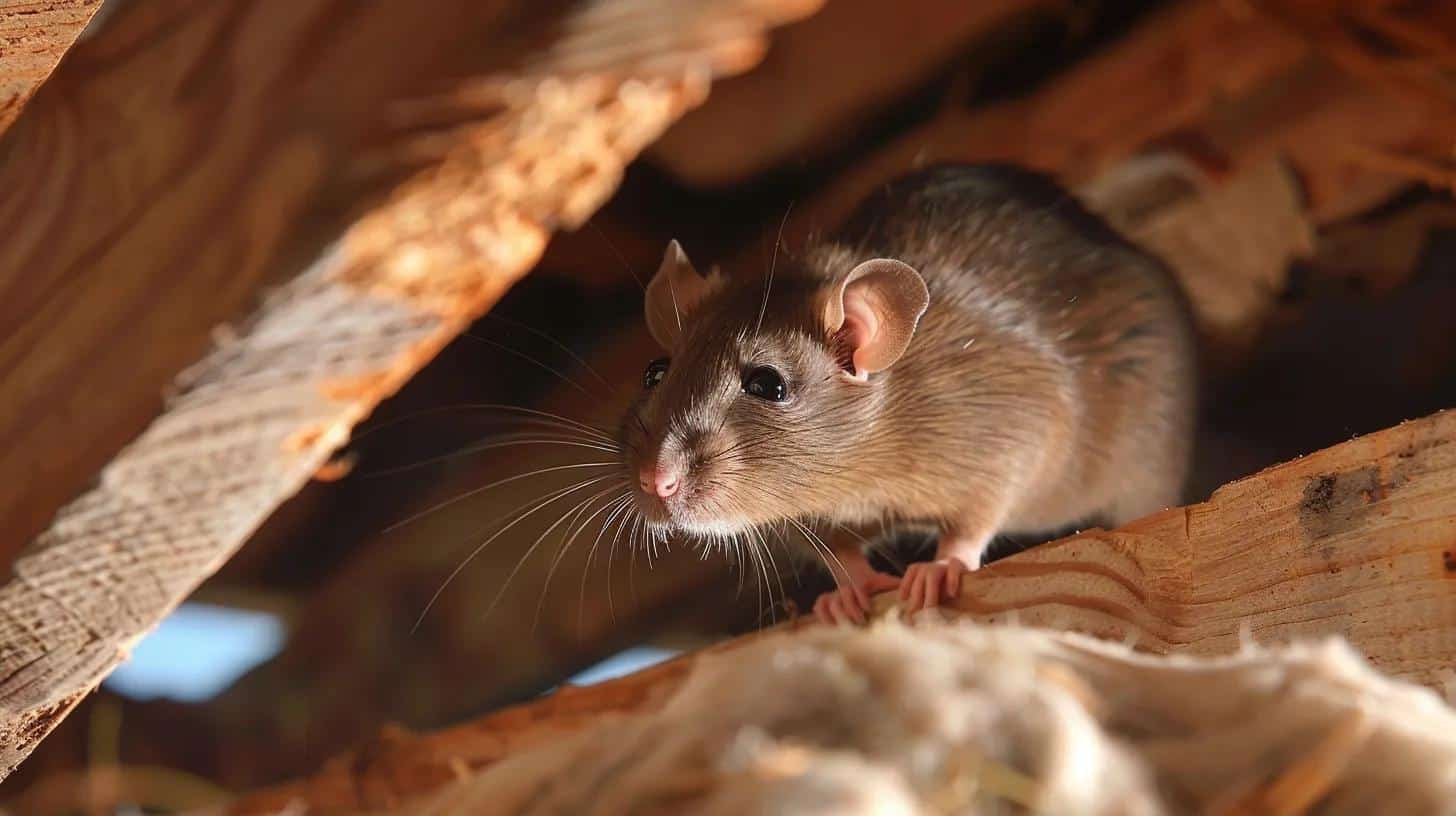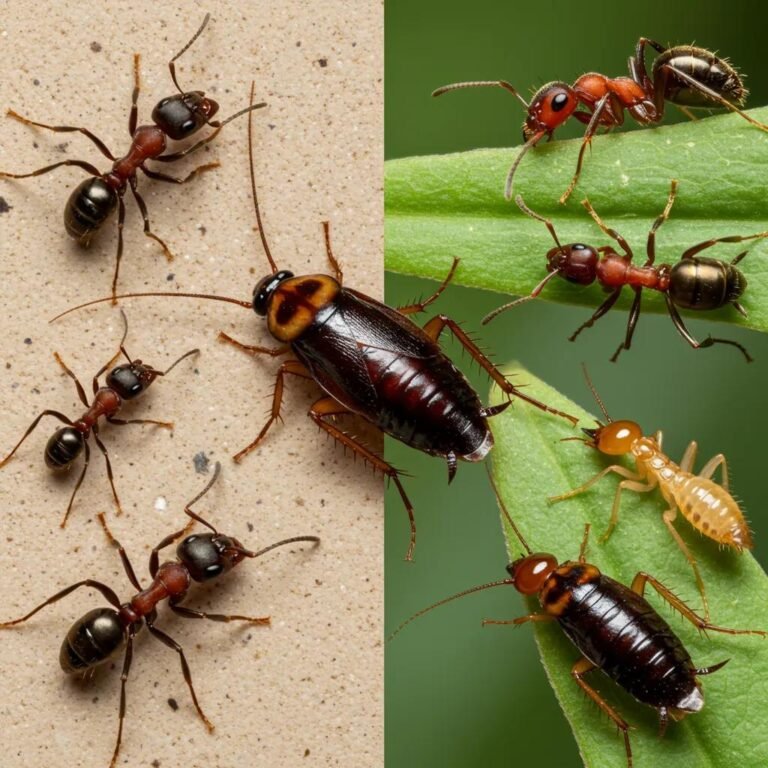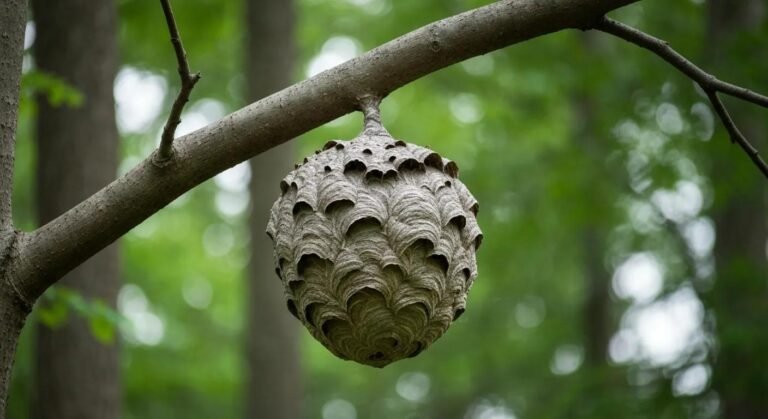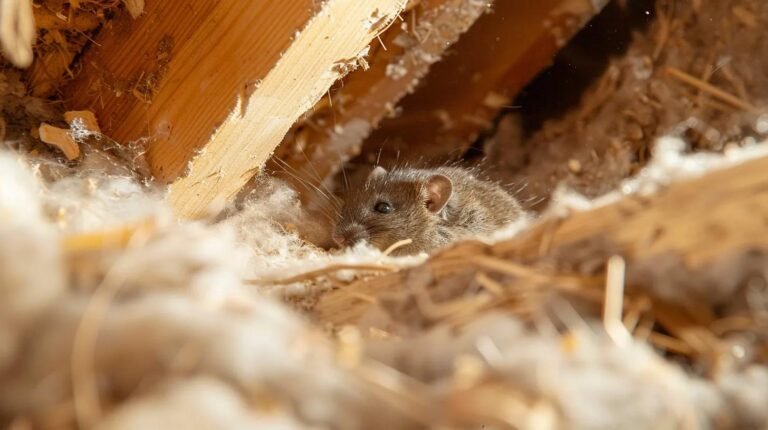Why Fall Is Prime Time for Rodent Infestations in South Florida

As South Florida transitions into fall, a subtle but significant shift occurs in the behavior of one of the most persistent and problematic pest groups: rodents. While the region’s mild climate means temperatures rarely reach the extremes experienced in northern states, even modest seasonal changes trigger powerful instinctual responses in mice and rats. Understanding these behavioral shifts and implementing proactive protection strategies can mean the difference between enjoying a comfortable fall season and dealing with a costly, stressful rodent infestation that can persist well into winter and beyond.
Fall rodent invasions represent more than just a seasonal inconvenience—they pose serious health risks, property damage concerns, and can quickly escalate from minor nuisances to major infestations if not addressed promptly and professionally. The combination of changing environmental conditions, increased food scarcity, and natural breeding cycles makes fall the most critical time for implementing comprehensive rat control and extermination strategies that protect homes throughout the cooler months ahead.
Understanding Fall Rodent Behavior
The behavioral changes that drive rodents indoors during fall months stem from millions of years of evolutionary adaptation. Even in South Florida’s subtropical climate, where temperature variations are relatively modest, rodents possess sophisticated environmental sensing abilities that detect subtle seasonal shifts long before humans notice significant changes.
Temperature and Shelter Seeking
While South Florida’s fall temperatures may seem mild compared to northern climates, the difference between average summer highs in the mid-90s and fall temperatures in the 80s represents a significant environmental change from a rodent’s perspective. These temperature drops trigger hardwired survival instincts that compel rodents to seek more stable, protected environments.
Rodents are particularly sensitive to nighttime temperature variations, which become more pronounced during fall months. The difference between daytime highs and overnight lows creates thermal stress that drives these mammals to seek shelter in structures that maintain more consistent temperatures. Modern homes, with their climate control systems and insulated construction, represent ideal thermal refuges for opportunistic rodents.
Additionally, fall’s changing daylight patterns affect rodent behavior significantly. As daylight hours decrease, nocturnal rodent species extend their active periods, increasing the likelihood of encounters with human structures. This extended activity period, combined with temperature-driven shelter seeking, creates perfect conditions for home invasions.
Food Scarcity and Foraging Pressure
Fall environmental changes also impact natural food availability for rodent populations. While South Florida’s year-round growing season means vegetation doesn’t disappear entirely, the quality and availability of natural food sources decline during fall months. Seeds, fruits, and other plant materials become less abundant, forcing rodent populations to expand their foraging territories and explore new food sources.
Human structures offer concentrated, consistent food resources that become increasingly attractive as natural sources become scarce. Homes provide not only direct food access through improperly stored items but also indirect resources like pet food, bird seed, and organic debris in gutters and landscaping. The reliability of these human-associated food sources makes homes incredibly attractive to rodent populations under foraging pressure.
Furthermore, fall weather patterns can impact outdoor food availability unpredictably. Sudden storms, extended dry periods, or unseasonably cool temperatures can eliminate natural food sources rapidly, creating emergency situations where rodent populations must find alternative resources quickly or face starvation.
Breeding Cycle Considerations
Many rodent species experience breeding cycle changes during fall months that influence their shelter-seeking behavior. Female rodents preparing for winter breeding cycles require secure, temperature-controlled nesting environments that protect developing offspring. Human structures provide ideal nesting conditions with consistent temperatures, protection from predators, and abundant nesting materials.
The urgency of finding suitable nesting sites intensifies competitive behavior among rodent populations, leading to more aggressive exploration of potential shelter sites. This increased exploration activity brings more rodents into contact with human structures during fall months than any other season.
Common South Florida Fall Invaders

Understanding the specific rodent species most likely to invade homes during fall months allows homeowners to implement targeted prevention strategies and recognize early warning signs before infestations become established.
Roof Rats: The Aerial Invaders
Roof rats represent the most common and problematic rodent species for South Florida homeowners during fall months. These agile climbers excel at accessing elevated areas of homes and can establish extensive populations in attics, wall voids, and roof structures without homeowners realizing the extent of the problem until significant damage occurs.
Roof rats typically measure 6-8 inches in body length with tails extending another 7-9 inches, making them smaller than Norway rats but larger than house mice. Their sleek build and excellent climbing abilities allow them to access homes through surprisingly small openings in rooflines, where building materials may have gaps or where utilities enter structures.
These rodents prefer elevated nesting sites and commonly establish colonies in attic insulation, where they create extensive tunnel systems that can compromise insulation effectiveness while leaving behind contamination that poses health risks. Their gnawing behavior can damage electrical wiring, creating fire hazards, while their nesting activities can block ventilation systems and cause moisture problems.
During fall months, roof rats become particularly aggressive in seeking new territory as young adults disperse from established colonies. This dispersal behavior brings them into contact with homes they might not explore during other seasons, making fall the most critical time for preventing roof rat establishment.
Norway Rats: Ground-Level Threats
While less common than roof rats in South Florida, Norway rats present significant challenges when they do establish around properties. These larger, more robust rodents typically measure 7-9 inches in body length with shorter tails than roof rats, and they prefer ground-level environments where they can dig extensive burrow systems.
Norway rats often establish populations under structures, in landscaping, and around outdoor storage areas where they can create complex tunnel networks that undermine foundations and create structural concerns. Their burrowing activities can damage irrigation systems, compromise walkways, and create safety hazards around properties.
These rodents become particularly problematic during fall months as they seek protected areas for winter nesting. Their larger size and more aggressive nature make them capable of creating significant property damage while their ground-level activity brings them into direct conflict with pets and creates contamination concerns in outdoor living spaces.
House Mice: Small but Numerous
House mice represent perhaps the most underestimated rodent threat during fall months due to their small size and ability to remain hidden within wall voids and other inaccessible areas. Measuring only 2-3 inches in body length with proportionally long tails, these diminutive rodents can squeeze through openings as small as a dime, making exclusion efforts challenging.
The reproductive potential of house mouse populations makes them particularly concerning during fall months when environmental conditions favor breeding activity. A single pair of mice can produce dozens of offspring during fall and winter months, turning a minor intrusion into a major infestation in a matter of weeks.
House mice prefer indoor environments and commonly establish nesting sites in wall voids, appliance areas, and storage spaces where they remain largely undetected until populations become substantial. Their small droppings and minimal individual impact can mask growing infestations until damage and contamination become significant.
Early Warning Signs of Rodent Activity
Recognizing the early indicators of rodent presence allows homeowners to address problems before they escalate into established infestations that require extensive remediation efforts. Professional pest identification services can confirm species and assess infestation extent, but homeowners should be alert to several key warning signs during fall months.
Visual Evidence
Rodent droppings represent the most obvious and reliable indicator of rodent activity, but the size, shape, and location of droppings provide important information about the species involved and the extent of the problem. Fresh droppings appear dark and moist, while older droppings become dry and crumbly, allowing homeowners to assess whether activity is current or historical.
Roof rat droppings typically measure about 1/2 inch in length with pointed ends and may be found in elevated areas like attics, along roof lines, and on top of cabinets or appliances. Norway rat droppings are larger, measuring up to 3/4 inch with blunt ends, and typically appear in ground-level areas like basements, garages, and around foundations.
House mouse droppings are much smaller, measuring only 1/8 to 1/4 inch in length with pointed ends, and may be scattered throughout areas where mice are active. The quantity of droppings can indicate population size, with established infestations producing dozens of droppings daily in active areas.
Gnaw marks provide another important visual indicator of rodent activity, particularly for assessing the size of rodents involved. Rat gnaw marks typically appear as parallel grooves about 1/8 inch apart, while mouse gnaw marks are smaller and closer together. Fresh gnaw marks appear light colored, while older damage darkens over time.
Auditory Clues
Rodent activity often produces distinctive sounds that become more noticeable during fall months when rodents increase their activity levels and spend more time in structures. Scratching or scurrying sounds in walls, ceilings, or attics typically indicate rodent movement, with the timing and intensity of sounds providing clues about species and population size.
Roof rats commonly produce scratching sounds in attics and wall voids, particularly during nighttime hours when they are most active. These sounds often intensify during fall months as rodents establish new nesting sites and expand existing territories.
Gnawing sounds may be audible when rodents chew through building materials, stored items, or food packaging. The intensity and duration of gnawing sounds can indicate both the size of rodents involved and their level of establishment within the structure.
Olfactory Indicators
Established rodent infestations often produce distinctive odors that become more noticeable in enclosed spaces like basements, attics, and storage areas. Fresh rodent urine has a strong ammonia-like odor, while established infestations may develop musty odors from accumulated droppings and nesting materials.
Dead rodents within wall voids or inaccessible areas can produce strong decomposition odors that help pinpoint infestation areas. These odors typically intensify over several days before gradually diminishing, but contamination concerns persist long after odors fade.
Structural Indicators
Rodents often leave physical evidence of their presence through damage to building materials, stored items, and landscaping. Greasy rub marks along walls, baseboards, and travel routes indicate regular rodent traffic, while damaged insulation, nesting materials, and chewed items confirm active infestations.
Burrow entrances around foundations, landscaping, and outdoor structures indicate ground-dwelling rodent activity, while damaged roof materials, fascia boards, and utility penetrations suggest aerial access by climbing species.
Professional Prevention Strategies
Effective rodent prevention requires comprehensive approaches that address multiple aspects of rodent biology and behavior while accounting for the specific challenges presented by South Florida’s climate and construction styles. Professional effective pest control services provide the expertise and resources necessary to implement thorough prevention programs that protect homes throughout fall and winter months.
Comprehensive Property Inspection
Professional rodent prevention begins with detailed property inspections that identify current rodent activity, potential entry points, attractant sources, and environmental conditions that favor rodent establishment. These inspections extend beyond obvious problem areas to assess the entire property perimeter and identify subtle vulnerabilities that rodents might exploit.
Experienced technicians understand rodent behavior patterns and can identify potential problem areas that homeowners typically overlook. This includes assessing vegetation management, drainage systems, outdoor storage practices, and structural maintenance needs that impact rodent pressure on properties.
Professional inspections also evaluate the specific rodent species likely to affect individual properties based on location, construction style, landscaping, and surrounding environmental conditions. This species-specific approach allows for targeted prevention strategies that address the most likely threats rather than generic approaches that may miss critical vulnerabilities.
Strategic Exclusion Work
Sealing entry points against pests represents the foundation of effective rodent prevention, but successful exclusion requires understanding rodent behavior and using appropriate materials and techniques for long-term effectiveness. Professional exclusion work addresses both current access points and potential future vulnerabilities.
Roof-level exclusion work requires specialized equipment and expertise to safely access and properly seal areas where utilities enter structures, where building materials join, and where weather damage may have created openings. Amateur exclusion efforts often miss critical access points or use inappropriate materials that rodents can easily defeat.
Foundation-level exclusion involves assessing and sealing gaps around utility penetrations, expansion joints, and areas where different building materials meet. Professional exclusion work also addresses landscaping and drainage issues that might create future access opportunities as vegetation grows or soil settles.
Environmental Modification
Successful rodent prevention extends beyond physical exclusion to include environmental modifications that make properties less attractive to rodent populations. This includes vegetation management, moisture control, sanitation improvements, and storage modifications that eliminate resources rodents need to establish and maintain populations.
Professional environmental assessments identify specific attractant sources and harborage areas that contribute to rodent pressure on individual properties. These assessments consider both obvious attractants like pet food and bird feeders and subtle factors like irrigation practices, mulch types, and outdoor storage arrangements.
DIY Prevention Techniques That Actually Work
While professional intervention provides the most comprehensive and reliable rodent prevention, homeowners can implement several effective strategies that significantly reduce rodent pressure and complement professional services. Understanding which DIY approaches provide genuine benefits versus those that offer false security helps homeowners make informed decisions about DIY vs professional pest control approaches.
Sanitation and Storage Management
Proper food storage represents one of the most effective DIY prevention strategies available to homeowners. Rodents require consistent access to food sources to establish and maintain populations, making food security a critical component of prevention programs.
All human food items should be stored in rodent-proof containers made of glass, metal, or heavy plastic with tight-fitting lids. This includes items commonly overlooked like cereal, crackers, pasta, and baking ingredients that rodents can easily access through cardboard packaging.
Pet food requires particular attention as it provides high-quality nutrition that strongly attracts rodent populations. Dry pet food should be stored in sealed containers rather than original bags, while feeding areas should be cleaned regularly to eliminate scattered food particles that can sustain rodent populations.
Basic Exclusion Measures
Homeowners can implement several basic exclusion measures that provide genuine protection against rodent entry. Weather stripping around doors and windows eliminates common access points while providing energy efficiency benefits that justify the investment regardless of pest concerns.
Screen repair and maintenance prevents rodent access through windows and vents while protecting against flying insects and other pests. Damaged screens should be repaired promptly, and screen materials should be fine enough to exclude young rodents that might squeeze through larger openings.
Utility penetrations around pipes, cables, and conduits often provide easy access for rodents and can be sealed effectively with appropriate materials. Steel wool combined with caulk provides temporary exclusion for small openings, though professional-grade materials offer superior long-term protection.
Landscape Management
Strategic landscaping modifications can significantly reduce rodent harborage and travel routes around properties. Vegetation should be maintained at least 18 inches from structures to eliminate cover that rodents use for approaching buildings undetected.
Tree branches that overhang rooflines provide aerial highways for roof rats and should be trimmed back to eliminate access routes. This includes palm fronds and other vegetation that might provide climbing access to elevated areas of homes.
Ground cover and mulch should be managed to eliminate thick layers that provide rodent harborage while maintaining appropriate landscaping aesthetics. Alternative ground cover materials like gravel or decorative stone offer less attractive environments for rodent establishment.
When to Call Professional Services
Understanding when rodent problems exceed DIY capabilities allows homeowners to seek professional intervention before minor issues become major infestations that require extensive remediation efforts. Several key indicators suggest that professional emergency pest control services may be necessary to address developing rodent problems effectively.
Signs of Established Infestation
Multiple daily sightings of rodents, particularly during daylight hours, typically indicate population levels that exceed DIY control capabilities. Rodents are naturally wary of human activity and prefer to remain hidden, so visible activity during daytime hours suggests overcrowding or resource competition that drives desperate foraging behavior.
Extensive damage to stored items, building materials, or personal property indicates established rodent populations that have moved beyond survival mode to territory establishment. This level of damage typically requires professional assessment to determine population extent and implement comprehensive control strategies.
Health and Safety Concerns
Rodent infestations pose serious health risks through disease transmission, contamination, and allergen production that require professional remediation to address safely. Accumulated droppings, urine contamination, and nesting materials can create hazardous conditions that exceed safe DIY cleanup capabilities.
Electrical damage from rodent gnawing presents fire hazards that require immediate professional assessment and repair. Damaged wiring within wall voids or other inaccessible areas may not be obvious until serious problems develop, making professional inspection crucial when rodent activity is suspected in these areas.
Structural Damage Concerns
Extensive burrowing activity around foundations, damage to insulation systems, or compromise of building materials typically requires professional assessment to determine repair needs and prevent future problems. Amateur repairs may address visible damage while missing underlying structural concerns that could lead to more serious problems.
Attic sanitation and insulation replacement often become necessary after significant rodent infestations, requiring specialized equipment and expertise to complete safely and effectively.
Integrated Fall Protection Programs
Comprehensive rodent protection during fall months requires integrated approaches that combine multiple control strategies while addressing the specific challenges presented by South Florida’s climate and pest pressure. Professional pest control services can design and implement integrated programs that provide reliable protection throughout the fall season and beyond.
Monitoring and Early Detection
Professional monitoring programs use strategic placement of detection devices and regular inspection schedules to identify rodent activity before populations become established. This early detection approach allows for rapid intervention that prevents minor rodent encounters from developing into major infestations.
Monitoring systems also provide valuable information about rodent species, population trends, and seasonal activity patterns that help refine control strategies and improve long-term effectiveness. This data-driven approach ensures that control efforts target actual problems rather than perceived threats.
Seasonal Treatment Programs
Fall-specific treatment programs address the unique challenges presented by seasonal rodent behavior changes while providing extended protection through winter months. These programs combine immediate population control with long-term prevention strategies that address changing environmental conditions and rodent pressure.
Professional treatment programs also adapt to changing rodent behavior patterns and environmental conditions throughout the fall season, ensuring that protection remains effective as conditions change and rodent pressure intensifies.
Long-Term Protection Strategies
Effective rodent protection extends beyond addressing immediate fall threats to include long-term strategies that prevent future infestations and maintain property protection year-round. Understanding the relationship between seasonal pest prevention and comprehensive property management helps homeowners develop sustainable approaches to rodent control.
Annual Maintenance Programs
Regular property maintenance that includes rodent prevention considerations provides ongoing protection while addressing other property care needs. Annual inspections of exclusion work, structural maintenance, and landscaping management help identify developing problems before they compromise property protection.
Professional maintenance programs combine pest prevention with general property care services that provide comprehensive protection while maximizing cost effectiveness. These integrated approaches ensure that pest prevention remains a priority throughout changing property management needs.
Climate Change Adaptations
Climate change pest control considerations have become increasingly important for long-term rodent management in South Florida. Changing weather patterns, extended breeding seasons, and altered food availability create new challenges that require adaptive management strategies.
Professional pest control services monitor changing environmental conditions and adapt their strategies accordingly, ensuring that protection remains effective as climate patterns continue to evolve. This forward-thinking approach helps homeowners prepare for changing pest pressure rather than reacting to new problems as they develop.
Conclusion
Protecting your home from rodent invasion during fall months requires understanding the complex behavioral changes that drive these persistent pests indoors and implementing comprehensive prevention strategies before problems develop. The combination of temperature changes, food scarcity, and breeding pressures makes fall the most critical season for rodent prevention in South Florida, when proactive measures can prevent problems that might persist throughout winter and into the following year.
While basic DIY prevention measures can provide valuable protection, the complexity of rodent behavior and the potential consequences of inadequate control make professional services a wise investment for most homeowners. Professional rodent control combines species-specific expertise with comprehensive prevention strategies that address both immediate threats and long-term protection needs.
The cost of professional rodent prevention pales in comparison to the potential expenses associated with structural damage, health risks, and extensive remediation efforts required after infestations become established. By investing in comprehensive fall protection programs, homeowners can enjoy peace of mind throughout the cooler months while protecting their properties from these persistent and problematic pests.
Don’t wait for signs of rodent activity to begin your fall protection efforts. Take proactive steps now to secure your home against these opportunistic invaders and ensure a comfortable, rodent-free fall season for you and your family.









